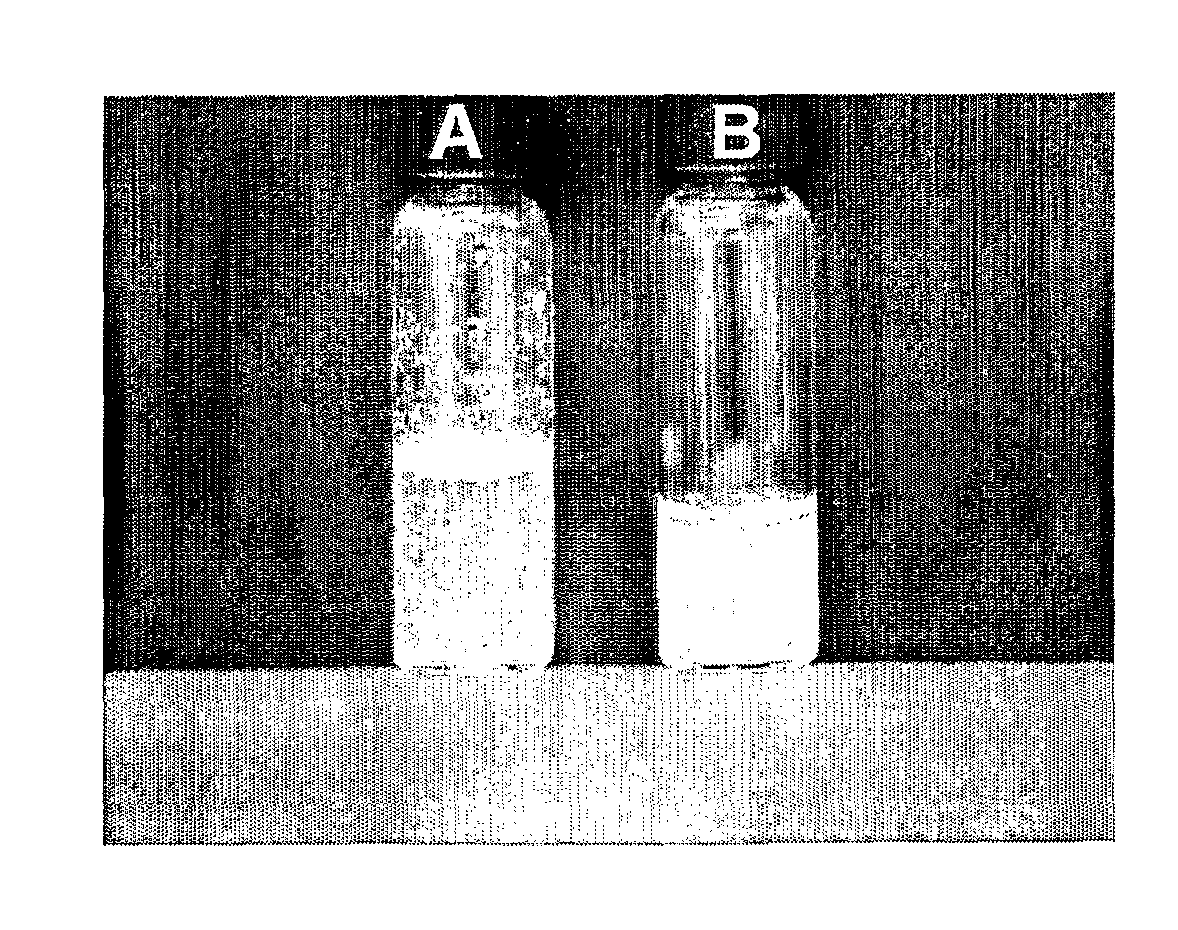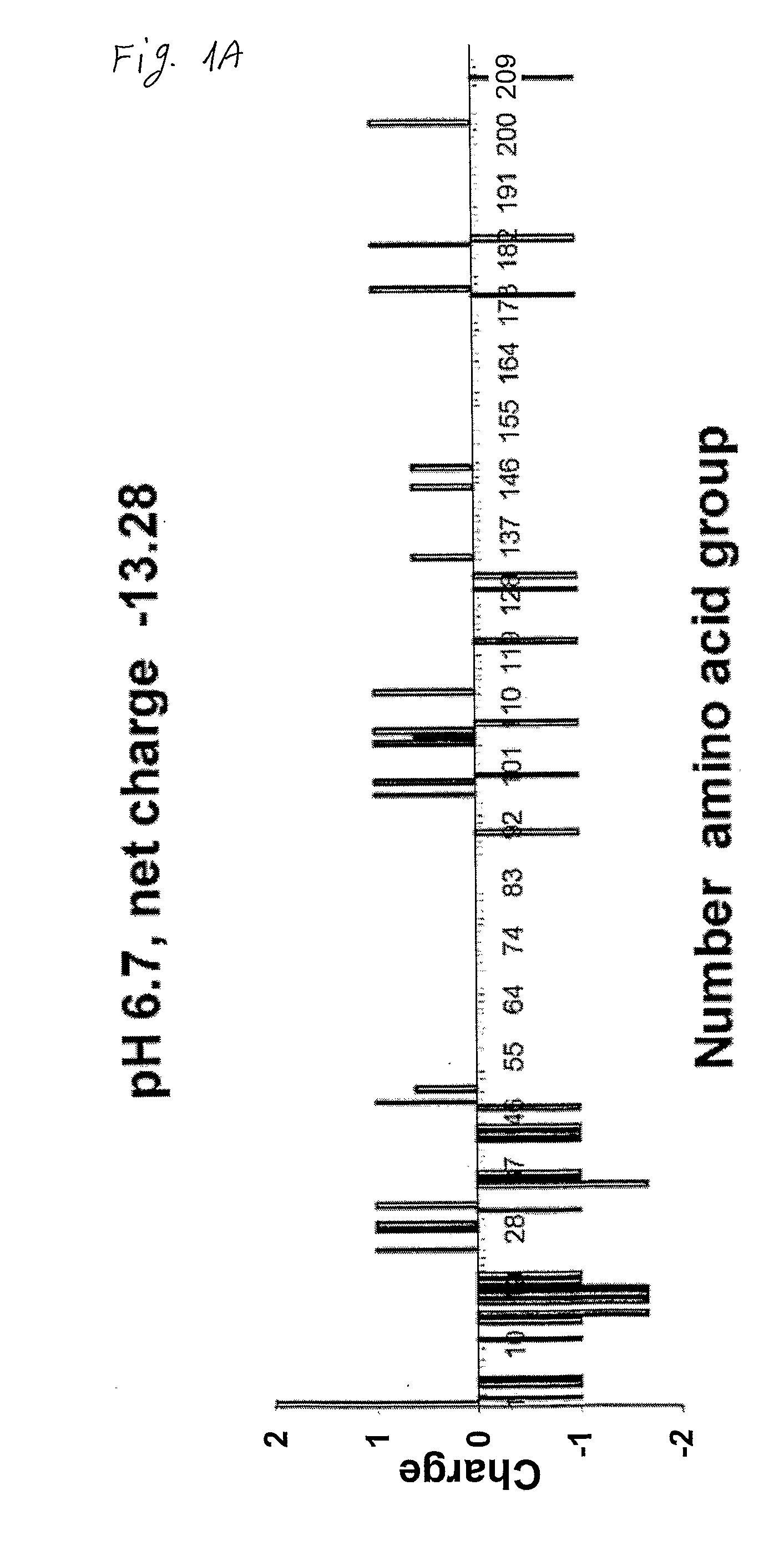Beta-casein assemblies for enrichment of food and beverages and methods of preparation thereof
a technology of betacasein and micelle, which is applied in the field of hydrophobic nutraceutical or additive delivery of food and beverages, can solve the problems of large amount of nano-scale solutions aimed at incorporating nutraceuticals and other additives in foods and beverages, especially clear ones, and are still scarce, and achieves the effects of reducing system free energy, reducing surface free energy (surface tension) and lowering the energy of the interfa
- Summary
- Abstract
- Description
- Claims
- Application Information
AI Technical Summary
Benefits of technology
Problems solved by technology
Method used
Image
Examples
example 1
[0095]Preparation of beta-casein assemblies: weighted amounts of lyophilized bovine beta-casein are dissolved in low-pH solution (e.g. ˜6% by weight of lactic acid solution or hydrochloride acid solution, ˜pH 2.1), typically at concentrations ranging from 0.1 mg / mL up to at least 50 mg / ml, to the desired pH (2.5-2.8), below the pI. The pH can be adjusted to the desired values using appropriate buffers. Mixing is done at room temperature, and the solution is equilibrated at 4° C. for ˜36 hr, allowing complete solubilization and formation of the protein assemblies. Thereafter, the solutions can be held at any temperature between 1 and 60° C. Similarly, to prepare beta-casein micelles at neutral pH, weighted amounts of lyophilized protein are added to a buffer at neutral pH (e.g., HEPES buffer, or PBS), at concentration ranging from 0.1 mg / ml to ˜40 mg / ml. Complete solubilization of the protein is achieved within ˜36 hr, at 4° C. A transparent solution is obtained, containing unique na...
example 2
[0097]beta-casein charge distribution: The distribution of charges along the beta-casein backbone and the beta-casein protein total charge at acidic and neutral pHs were calculated. To estimate the net charge and the charge distribution of beta-casein at pH 2.6, we used a procedure similar to that reported by Ribadeau et al. 1972, Eur. J. Biochem., 25:505-14. The degree of protonation, θi, A of the individual titratable sites was calculated from the Henderson-Hasselbach equation. This equation is not valid when strong electrostatic interactions exist between titratable sites but can be used when the protein is in an unfolded state. Because beta-casein has an open structure, the equation is appropriate for calculating its net charge at low pH.
[0098]FIG. 1 shows the distribution of charges along the protein sequence at the two pH regimes. At pH 6.7, most charges are concentrated at the N-terminus, while the long C-terminus is highly hydrophobic. A net charge of −13.28 was calculated a...
example 3
[0099]Characterization of the beta-casein micelles by cryo-TEM: The structural characteristics of the micelles in the two pH environments were studied by cryo-TEM and SAXS. Cryo-TEM was used to determine the shape of the micelles and to estimate their dimensions between 4 and 40° C. This information was further used to accurately calculate by SAXS the micelles' dimensions and to study how the size and shape are affected by temperature. SAXS measurements also provided the critical micelle concentration (CMC) and the micelle aggregation numbers as a function of temperature. Experiments were performed in the concentration range of 0.1-40 mg / mL protein, at low pH (between 2.1 and 2.6) in dilute lactic acid solution (6 wt %) or HCl and in aqueous solutions at pH 6.7 in the presence of 0.05M NaCl.
[0100]In the lactic acid solution (pH 2.6), flat disk-like micelles formed within the complete temperature range studied (4-40° C.), as shown in the cryo-TEM images presented in FIG. 2. From the ...
PUM
| Property | Measurement | Unit |
|---|---|---|
| Temperature | aaaaa | aaaaa |
| Temperature | aaaaa | aaaaa |
| Fraction | aaaaa | aaaaa |
Abstract
Description
Claims
Application Information
 Login to View More
Login to View More - R&D
- Intellectual Property
- Life Sciences
- Materials
- Tech Scout
- Unparalleled Data Quality
- Higher Quality Content
- 60% Fewer Hallucinations
Browse by: Latest US Patents, China's latest patents, Technical Efficacy Thesaurus, Application Domain, Technology Topic, Popular Technical Reports.
© 2025 PatSnap. All rights reserved.Legal|Privacy policy|Modern Slavery Act Transparency Statement|Sitemap|About US| Contact US: help@patsnap.com



